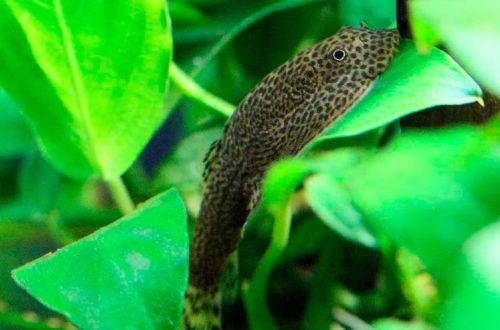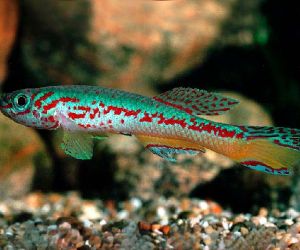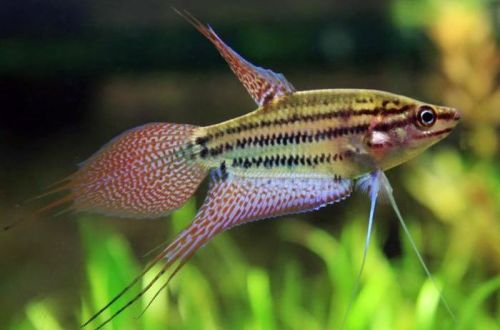
Gastromizon striped
Gastromyzon striped, scientific name Gastromyzon fasciatus, belongs to the family Balitoridae (River loaches). The fish is native to Southeast Asia. It is considered endemic to the river systems of the island of Kalimantan (formerly Borneo). Inhabits the upper reaches of rivers – fast mountain streams.

Description
Adults reach a length of about 7 cm. The fish has a strongly flattened body with large fan-shaped pectoral and ventral fins. Such a structure is designed to live in turbulent streams. Gastromison striped is able to cling tightly to the surface of stones and boulders, and thanks to its streamlined body, it successfully resists strong currents.
The coloration is dark or light gray with a pattern of lighter stripes that ring the body of the fish. It is worth noting that at a young age the body pattern is spotted. Stripes are weak or absent.
Behavior and Compatibility
Young fish are peaceful, but as they mature, they can exhibit territorial behavior that is associated with competition for food. Given the specifics of the habitat, only species that can live in strong currents can be considered as compatible species. These may be other Gastromisons and some Loaches.
Brief information:
- The volume of the aquarium – from 100 liters.
- Temperature – 22-26°C
- Value pH — 6.5–7.5
- Water hardness – 5–15 dGH
- Substrate type — stony
- Lighting – moderate or bright
- Brackish water – no
- Water movement – moderate or strong
- The size of the fish is about 7 cm.
- Nutrition – any plant-based sinking food
- Temperament – conditionally peaceful
- Keeping alone or in a group of 3-4 individuals
Maintenance and care, arrangement of the aquarium
The optimal size of the aquarium for 3-4 fish starts from 100 liters. When keeping Gastromizons striata, the bottom area of the tank is more important than the height. In the design, it is necessary to recreate the bottom of a mountain river. When decorating, you can use a gravel substrate, large stones and boulders, driftwood. Aquatic plants are usually absent. If desired, it is permissible to place a certain amount of aquatic mosses and ferns fixed on the surface of stones and snags.
The quality of the water is of key importance. Being a native of flowing waters, the fish do not respond well to the accumulation of organic waste. In addition, they need oxygen-rich water.
The aquarium should be equipped with a productive filtration system and probably provide additional aeration. The quality of the water will depend not only on the operation of the filter, but also on the regularity of maintenance of the aquarium, in particular the weekly replacement of part of the water with fresh water and cleaning the soil.
Food
In nature, it feeds on algal film from stones and snags, as well as microorganisms that live in it. In a home aquarium, plant-based foods should be the basis of the diet. It can be tablets, plates, jelly blocks, gels and other foods that are heavy enough to be carried away by the current. Pieces of vegetables and fruits (cucumber, zucchini, blanched peas, spinach, etc.) will be a good addition.





